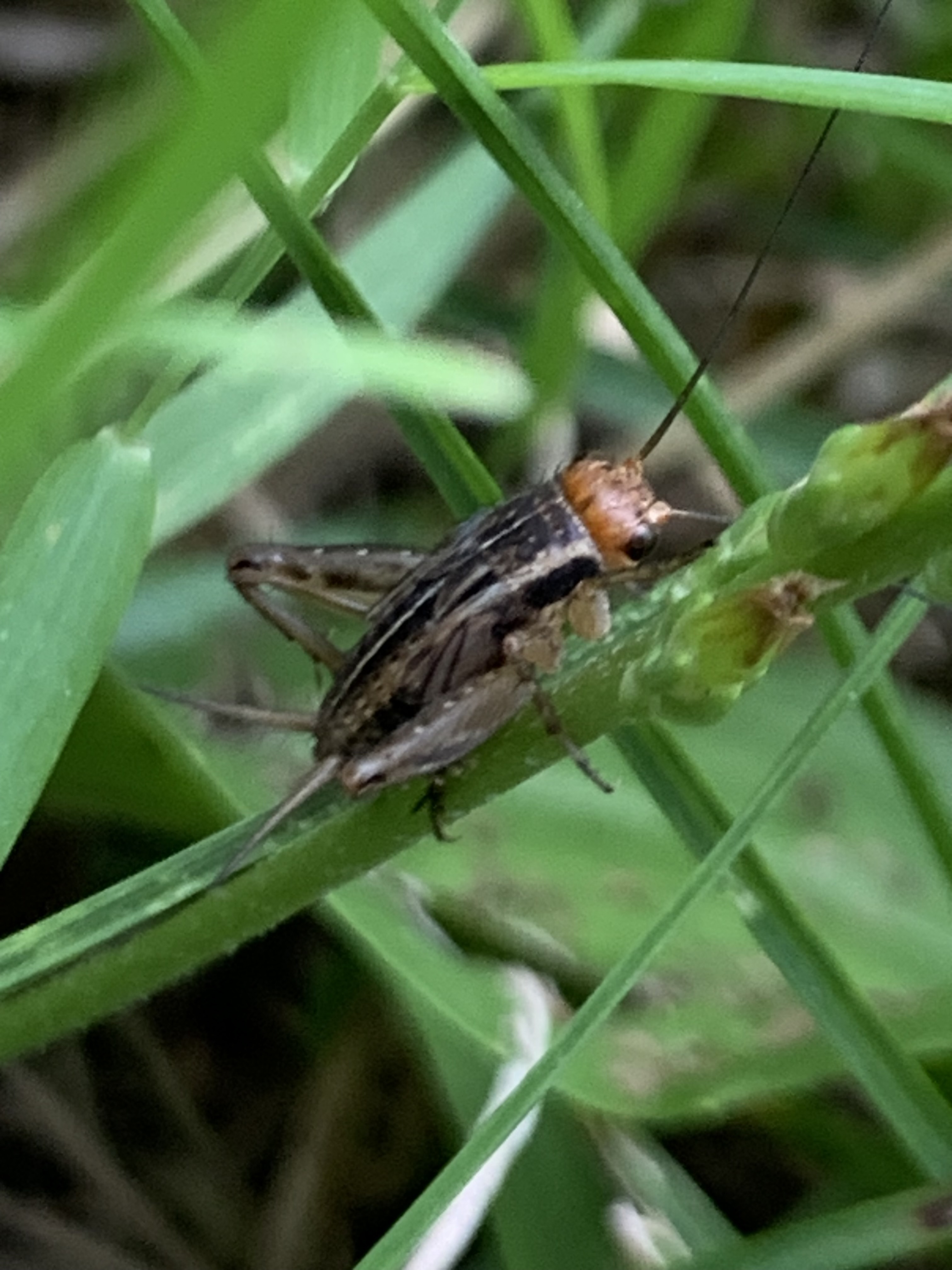Stepping out in the afternoon of a hot summer day, I am surrounded by the songs of the insects. They’ve taken over from the birds to create that distinctive and to me beloved soundscape of high summer. As I listen, I wonder—what is that high-pitched, almost at the edge of my hearing, trill that overlays it all? It has formed the daytime background since some time in early July and will keep up its song until frost puts an end to it, probably in late October. An Iowa State entomologist suggests that it is Say’s Trig, (Say’s Trigonidiinae) a type of winged bush cricket. A legion of them are out there in the grass and the weeds and bushes scraping their wings together in a constant plea for feminine company. The little fellows are brown to straw-colored, with darker stripes differentiating their species from the other twelve trigs native to the eastern United States. They have two sets of wings, and do their singing by using the scraper on the edge of the hind wing to rasp across the file on the forewing. The file is composed of between 100 and 130 well-developed bumps, and the little cricket scrapes away unceasingly throughout the day, creating that high-pitched shimmering trill that reminds me of an old-fashioned television tube keening away with the sound turned down. The bush crickets sing louder as the temperature rises in the afternoon, and then taper off as it cools down at evening, replaced by lower-pitched tree crickets.
They’ve been eating leaves and flowers, insect eggs and insects that are smaller than they are. The males are about 3/16 inches long, and the females a little larger at ¼ inches. Like other insects, they have six legs, two sets of wings, and two long antennae on their heads. They hatch in the spring, looking like miniatures of the adults they will become. They molt ten to twelve times, shedding their skins and growing bigger with each molt. When they’re mature, in early July, they start singing, mate, and the females lay eggs in the soil that will hatch into next year’s chorus.
These little bush crickets are named for Thomas Say, dubbed the Father of American Entomology. Living from 1787 to 1834, Say accompanied several expeditions to the interior, going as far as the Rocky Mountains. On these expeditions he found, drew and catalogued thousands of native American insects, birds, fish, mollusks and mammals.
He discovered our tiny winged bush cricket that bears his name on his first expedition across the great plains in 1819. On that same expedition, he was the first to describe the coyote, swift fox, western kingbird, band-tailed pigeon, Say’s phoebe, rock wren, lesser goldfinch, lark sparrow, lazuli bunting, and orange-crowned warbler. The pirate perch and the blunt-nosed stingray bear his name in their scientific nomenclature, as do a significant list of other species including our little winged bush cricket.
Say landed in New Harmony, Indiana where he pursued his work based on his field notes. Life was difficult, and getting his work published was slow. In a letter requesting assistance for him, his friend William McClure described him as “modest and unassuming, not well calculated for scrambling amongst the intrigue and forward ambition” among the scientists in Philadelphia.
He researched and published two major series of books on his discoveries, including Thomas Say, American Entomology, or Descriptions of the Insects of North America, 3 volumes, Philadelphia, 1824-1828, and Thomas Say, American Conchology, or Descriptions of the Shells of North America Illustrated From Coloured Figures From Original Drawings Executed from Nature, Parts 1 – 6, New Harmony, 1830-1834; Part 7, Philadelphia, 1836.
As Say discovered, the new world was filled with native species unknown to Europeans. Of course, the Native American people were familiar with all of his “discoveries.” This winged bush cricket is only one of hundreds of thousands of American natives. He will sing away the summer and stop only when the frost comes to his bush.
Photo by Author. Alt text: A small, brown cricket with bold stripes, long antennae and two “horns” (cerci) at the rear of its abdomen, sits on a blade of grass. A Brown Trig in the author’s yard. Not certain this one is a Say’s Trig (Karen is not an entomologist), but there’s a bunch of them. 2 or 3 jump away at every footfall.

3 comments
I love the disclaimer “Karen is not an entomologist” in the alt text 😀 Great piece!
Can Laurie Anne tell from the picture? Wonderful reading as always Karen!
Donald Lewis, an entomologist at Iowa State, suggested that what I was hearing was Say’s Trig.